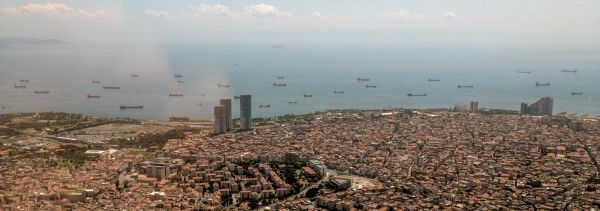One of the high-risk geological structures lies near Istanbul, a megacity of 15 million people. The North Anatolian fault, separating the Eurasian and Anatolian tectonic plates, is a 1.200 kilometer-long fault zone running between eastern Turkey and the northern Aegean Sea. Since the beginning of the 20th century its seismic activity has caused more than 20.000 deaths. A large (Mw > 7) earthquake is overdue in the Marmara section of the fault, just south of Istanbul.
In a new study, led by Peter Malin and Marco Bohnhoff of the GFZ German Research Center for Geosciences, the authors report on the observation of foreshocks that, if analyzed accordingly and in real-time, may possibly increase the early-warning time before a large earthquake from just a few seconds up to several hours. However, the authors caution: „The results are so far based on only one – yet encouraging – field example for an ‚earthquake preparation sequence‘ typically known from repeated rock-deformation laboratory experiments under controlled conditions“, says Marco Bohnhoff.
The study from Peter Malin and Marco Bohnhoff, together with colleagues from the AFAD Disaster and Emergency Management Presidency in Turkey, uses waveform data from the recently implemented GONAF borehole seismic network. GONAF operates at low-magnitude detection. It allowed identifying a series of micro-earthquakes prior to an earthquake of magnitude 4.2 which occurred in June 2016 south of Istanbul and which was the largest event in the region in several years.
Read more at GFZ Geoforschungszentrum Potsdam, Helmholtz Centre
Image: Istanbul and the Prince Islands in the background, on which the borehole observatory GONAF is located. (Credit: photo: M.Bohnhoff, GFZ)


